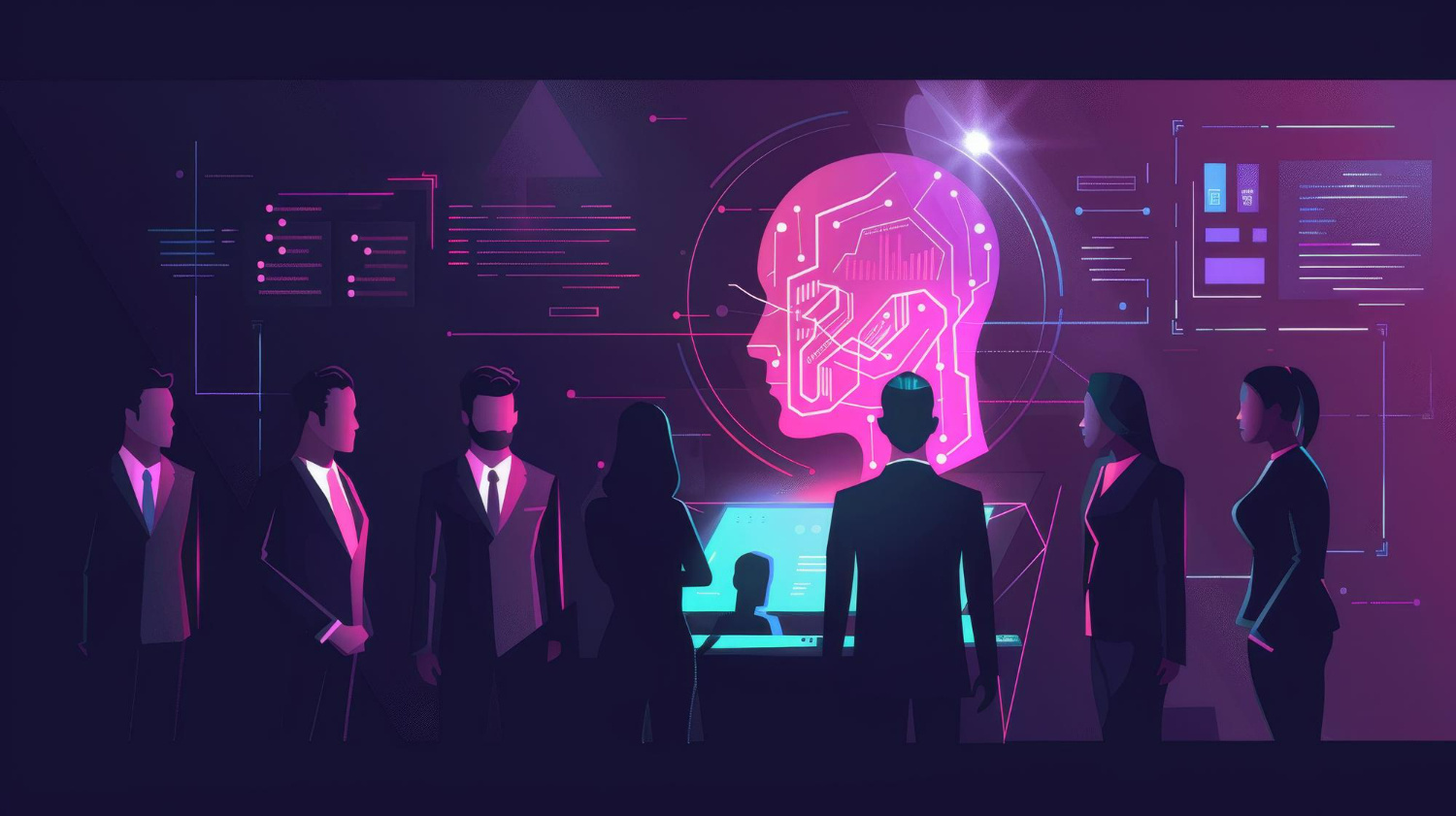AI in Insurance - Significance and Impact
InsurTech businesses are using artificial intelligence (AI) to expand in the current digital sphere.
The market for artificial intelligence in insurance is projected to be worth USD 6.92 billion by 2028 and increase at a CAGR of 24.08% during that time.
According to a poll, 21% of insurance companies claim that they are educating their staff for interactive, collaborative, and understandable AI-based solutions.
It is anticipated that decision-makers would prioritize investing in AI insurance.
Insurance automation for operational procedures is necessary to provide individualized insurance services as part of digital transformation solutions.
AI accomplishes the same thing by automating operational duties now carried out by people in a faster, less error-prone manner.
The evolution of AI throughout time has had significant effects on most tech-driven businesses, including the insurance sector.
The whole insurance value chain is being subjected to machine learning, data modeling, and predictive analysis thanks to AI, and the results have been positive in the form of improved customer satisfaction and a higher bottom line.
Continue reading to learn about the influence AI has had and will continue to have on the now-digitally driven insurance business.
AI's Role in Insurance: The Need
The insurance sector is mature and heavily regulated. Insurance businesses have adopted technological change more slowly than other industries, maybe as a result.
The insurance industry is still heavily reliant on sluggish, manual, paper-based procedures.
Even today, clients must deal with lengthy paperwork and bureaucracy in order to obtain reimbursement for a claim or enroll in a new insurance policy.
Customers may also pay extra for insurance because it is not customized for their specific requirements.
Insurance is not always a positive customer experience, even in this day and age when most of our everyday activities are online, digital, and convenient.
Having said that, insurance firms are beginning to make an international effort to improve their technical prowess in order to conduct business more quickly, affordably, and securely.
There have been several well-known instances in recent years of insurers making significant investments in AI products.
If AI technology is completely used in the insurance business, McKinsey predicts a potential yearly value of up to $1.1 trillion.
The corporate sectors that stand to gain the most from this are:
1. Sales and marketingMachine learning may be used to provide clients with more relevant and competitively priced insurance coverage.
To ensure that clients only pay for the coverage they require, insurers can price their packages based on specific demands and lifestyles.
As a result, insurance becomes more appealing to a larger spectrum of clients, some of whom could subsequently buy insurance for the first time.
2. RiskFraud trends may be identified using neural networks, which helps to cut down on false claims.
Additionally, machine learning can be used to enhance the actuarial and risk models used by insurance companies, potentially resulting in more profitable products.
3. OperationsNeural network-based chatbots may be created to comprehend and respond to most client questions via email, chat, and phone calls.
For insurers, this can result in considerable time and resource savings that they can use for other lucrative endeavors.
Impact of AI on Insurance's Future
The automation of the insurance sector won't begin with the use of chatbots, NLP, and OCR.
We were essentially pushed to adopt new technology by the epidemic in order to continue in business.
There is no doubt that this technological revolution will continue.
Artificial intelligence and deep learning methods have not yet been fully utilized.
In the coming ten years, it is anticipated that insurance will change from its current condition of "detect and repair" to "predict and prevent".
In the scenarios, robots will undoubtedly mirror the observation, reasoning, learning, and problem-solving abilities of the human mind.
The use of cutting-edge technology to boost productivity, cut costs, improve decision-making, and improve customer happiness is becoming more and more commonplace among users.
1. Usage-based insuranceBehavioral policy pricing has greatly benefited from AI.
Analytical, individual-based data has replaced the conventional methodology of calculating an insurance premium based on statistical statistics to determine the precise premium.
The Internet of Things (IoT) has made this feasible.
Examples of this include wearable technology, sensor-equipped items, location-based sensors, and satellite-based systems for capturing geographic data.
2. Customer experience is improvedCustomers want clear information that will be useful to them over jargon.
AI-powered chatbots are useful for providing straightforward answers to customers' difficult questions.
The role of chatbots has changed from that of a glorified "Frequently Asked Questions" assimilator to one where they can recognize clients' faces and offer them insurance.
An insurance provider, for instance, sells life insurance based on a selfie!
Thanks to automation, AI is also helpful in accelerating the claim process.
3. Reliable underwritingWhen there is a big volume of data, AI analysis outperforms human analysis.
Instead of manually reviewing the data, the underwriter may concentrate on the strategy and portfolio management element with the help of AI tools.
The algorithms of AI are more effective at laborious underwriting jobs.
Sometimes a powerful underwriting strategy is reached by combining several AIs.
TransformHub, counted among the top digital transformation services companies in Singapore takes complete accountability to assist you with tools development to sustain efficient underwriting.
4. Lowering fraudIn the insurance sector, identity theft-related frauds are quite widespread.
AI can spot process flaws that make the claims process susceptible to fraud.
Machine learning algorithms may go through past data to look for any anomalies.
It is possible to draw attention to specific patterns, which will warn you of any fraudulent activities.
The human eye alone cannot provide such a high degree of examination, but when combined with AI, the human eye may be incredibly effective.
5. Creating trustIn the end, policyholders desire a quick claim procedure.
After the claim has been resolved, the customer will evaluate the performance of the insurance company.
One of the key factors used by customers to evaluate insurance companies is the time spent resolving claims, with the quick resolution being the most significant one.
All through the insurance process, trust is essential.
AI should inspire confidence in both present and prospective policyholders.
The advancement of AI shouldn't be viewed by policyholders as a means of depriving them of an honest claim reimbursement; rather, they should view it as a tool that makes it possible.
Four AI-related Trends Shaping the Insurance Industry
The fundamental technologies of AI are already present in our workplaces, homes, cars, and ourselves.
The disruption caused by COVID-19 altered the adoption timescales for AI by dramatically increasing digitalization for insurance.
The need for firms to adapt to distant workforces, extend their digital capabilities to enable distribution, and modernize their online channels came about essentially overnight.
Although the majority of organizations probably didn't make significant investments in AI during the pandemic, the increased focus on digital technologies and a greater openness to change will put them in a better position to do so.
Over the next 10 years, 4 key technological trends that are closely related to (and occasionally made possible by) AI will change the way that insurance is done.
1. Explosion of linked device dataSensor-equipped equipment has long been commonplace in industrial settings, but the number of linked consumer products will skyrocket in the years to come.
With the addition of new, expanding categories including apparel, eyeglasses, home appliances, medical devices, and shoes, the penetration of current devices (such as automobiles, fitness trackers, home assistants, and smartphones) will continue to rise quickly.
By 2025, experts predict that there will be up to a trillion linked gadgets.
These gadgets will generate a flood of new data that will enable carriers to better understand their customers, leading to the development of new product categories, more individualized pricing, and an increase in the real-time delivery of services.
By 2025, experts predict that there will be up to a trillion linked gadgets.
2. Rise in the use of physical roboticsRecent developments in the realm of robotics have been quite exciting, and this innovation will continue to alter how people interact with their environment.
Future commercial insurance products will be significantly altered by additive manufacturing, often known as 3-D printing.
Carriers must evaluate how the widespread use of 3-D printed structures would alter risk evaluations by 2025.
Additionally, in the following 10 years, commercially viable drones that can be programmed, autonomous farming tools, and improved surgical robots will all be available.
The number of standard cars with autonomous characteristics, such as self-driving capability, will increase significantly by 2030.
3. Data and open-source ecosystemsOpen-source protocols will develop to guarantee that data may be shared and used across sectors as it becomes more commonplace.
Several public and commercial organizations will collaborate to build ecosystems that will allow them to exchange data for a variety of use cases while operating inside a shared regulatory and cybersecurity framework.
Wearable data, for instance, might be transferred directly to insurance companies, and connected home and auto data may be made accessible through companies like Amazon, Apple, Google, and a wide range of consumer electronics producers.
4. Cognitive technology advancementsConvolutional neural networks and other deep learning technologies, which are presently mostly utilized for unstructured text, audio, and picture processing, will develop into a wide range of applications.
The extremely large and complex data streams produced by "active" insurance products linked to an individual's behavior and activities will be processed by these cognitive technologies, which are loosely based on the human brain's capacity to learn through decomposition and inference.
Carriers will have access to models that are constantly learning and adapting to the world around them as a result of the increased commercialization of these types of technologies, enabling new product categories and engagement strategies while instantly reacting to changes in underlying risks or behaviors.
How Can TransformHub Assist You?
The future of the insurance sector is about to change as a result of artificial intelligence.
TransformHub offers the best digital transformation services and is here to be your dependable growth partner and assist you in reaping the rewards of automation in the insurance industry.
By utilizing our experience and knowledge of software development for AI, we have been effective in assisting companies in altering their operational capacities.
Share this
You May Also Like
These Related Stories

Generative AI and What it Means for Businesses

The Ethical Implications of AI in Decision-Making: Navigating New Frontiers




